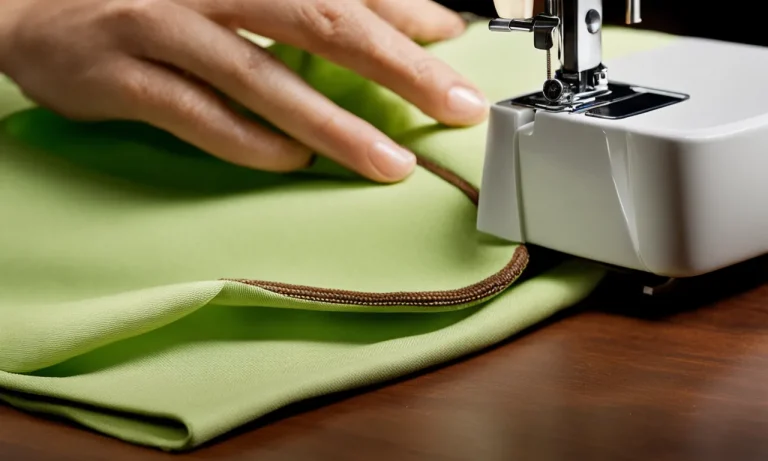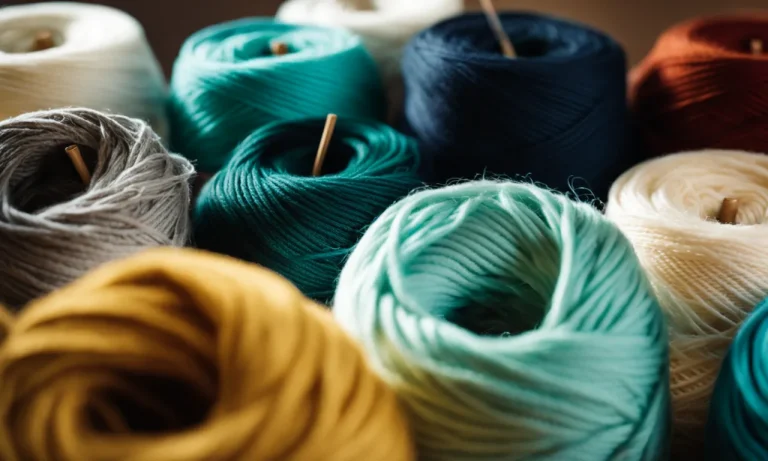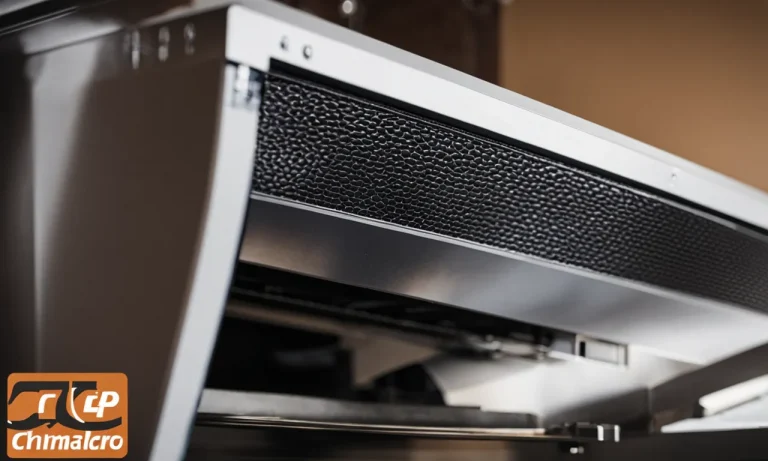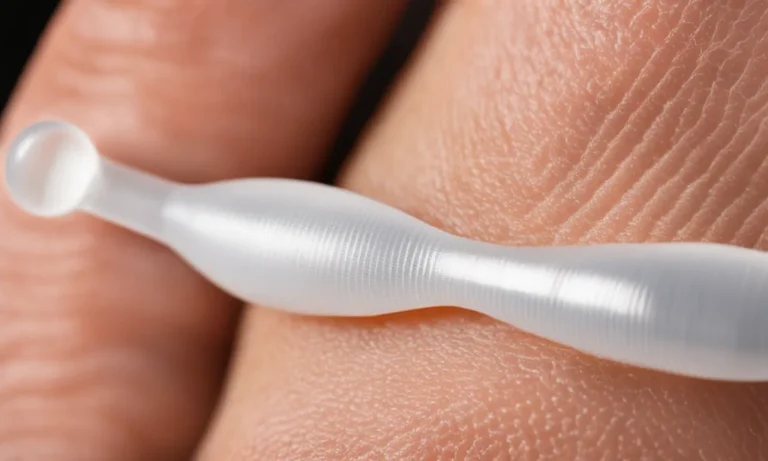Can Fabric Softener Cause Hives?
If you’ve ever broken out in an itchy rash after using fabric softener, you may be wondering if the product is to blame. Hives, also known as urticaria, are red, raised welts on the skin that often come with intense itching.
In this article, we’ll take an in-depth look at the potential link between fabric softeners and hives.
If you’re short on time, here’s the quick answer: Fabric softeners can cause hives in some people due to fragrance allergies or skin irritation from ingredients. Switching products or avoiding fabric softener may solve the problem.
What Are Hives?
Hives, also known as urticaria, are a common skin condition characterized by raised, itchy, and red welts on the skin. These welts can vary in size and shape and may appear anywhere on the body. Hives can be acute, lasting for a few hours or days, or chronic, lasting for more than six weeks.
Definition and Symptoms
Hives are caused by an allergic reaction in the body, which triggers the release of histamine. Histamine is a chemical that causes blood vessels to leak and skin to swell, leading to the formation of hives. The symptoms of hives include:
- Raised, itchy welts on the skin
- Redness and swelling
- Burning or stinging sensation
- Blanching when pressed
Hives can also be accompanied by other symptoms such as difficulty breathing, dizziness, and swelling of the face, lips, or tongue. These symptoms may indicate a more severe allergic reaction known as anaphylaxis, which requires immediate medical attention.
Common Triggers and Causes
Hives can be triggered by a variety of factors, including:
- Allergens: Common allergens that can cause hives include certain foods (such as nuts, shellfish, and eggs), medications (such as antibiotics and nonsteroidal anti-inflammatory drugs), and insect stings.
- Environmental factors: Exposure to extreme temperatures, sunlight, water, or pressure on the skin can trigger hives in some individuals.
- Infections: Certain viral or bacterial infections can cause hives as the body’s immune response to the infection.
- Stress: Emotional stress or anxiety can also trigger hives in some people.
It is important to note that not everyone reacts to the same triggers, and what may cause hives in one person may not affect another. Additionally, some individuals may experience chronic hives without a clear trigger, making it difficult to determine the exact cause.
While fabric softener is not a common trigger for hives, some individuals may experience an allergic reaction to the chemicals or fragrances present in these products. If you suspect that fabric softener is causing your hives, it is advisable to switch to hypoallergenic or fragrance-free alternatives and consult with a healthcare professional for further guidance.
Do Fabric Softeners Contain Ingredients That Can Cause Hives?
Fabric softeners are a common household product used to make clothes feel softer and reduce static cling. However, some individuals may experience an allergic reaction to fabric softeners, resulting in hives.
Let’s take a closer look at the ingredients found in fabric softeners that could potentially cause this reaction.
Fragrance
Many fabric softeners contain fragrances to give clothes a fresh scent. However, these fragrances can be a common trigger for allergic reactions such as hives. The specific chemicals used in fragrances can vary from brand to brand, making it difficult to pinpoint the exact cause of the allergic reaction.
If you suspect that fragrance is the culprit, consider switching to fragrance-free fabric softeners.
Formaldehyde
Formaldehyde is a preservative commonly used in fabric softeners to prevent bacterial growth. This chemical has been known to cause skin irritation and allergic reactions in some individuals. Exposure to formaldehyde can lead to hives, itching, and redness.
If you are sensitive to formaldehyde, it is important to choose fabric softeners that are labeled as formaldehyde-free.
Quaternary Ammonium Compounds
Quaternary ammonium compounds, also known as quats, are commonly found in fabric softeners. These chemicals help to reduce static cling and make clothes feel softer. However, some individuals can develop an allergic reaction to quats, resulting in hives.
If you suspect that quats are causing your hives, consider using fabric softeners that are quat-free.
Optical Brighteners
Optical brighteners are chemicals added to fabric softeners to make clothes appear brighter and whiter. While they may enhance the visual appearance of clothing, they can also cause skin irritation and allergic reactions in some individuals.
If you have a history of hives or sensitive skin, it may be beneficial to choose fabric softeners that do not contain optical brighteners.
It is important to note that not everyone will have an allergic reaction to fabric softeners. However, if you are experiencing hives or other allergic symptoms after using fabric softeners, it may be worth considering alternative products or speaking with a dermatologist for further guidance.
Tips to Prevent Hives from Fabric Softener
Hives, also known as urticaria, can be an uncomfortable and irritating skin condition. For some people, fabric softeners can be a trigger for hives. If you suspect that fabric softener is causing your hives, here are some tips to help prevent them:
Avoid products with added fragrance
Fragrances added to fabric softeners can contain various chemicals that may cause skin irritation. It is best to avoid fabric softeners with added fragrance and opt for fragrance-free alternatives. Look for products that are labeled as hypoallergenic or specifically designed for sensitive skin.
Use plant-based, fragrance-free softeners
Plant-based fabric softeners are often made from natural ingredients and are less likely to cause skin reactions. These softeners are typically fragrance-free, making them a suitable option for individuals prone to hives or with sensitive skin.
Some popular plant-based fabric softener brands include Seventh Generation and Mrs. Meyer’s.
Rinse clothes thoroughly
Residual fabric softener left on clothes can come into contact with your skin and potentially trigger hives. To minimize this risk, make sure to rinse your clothes thoroughly after washing them with fabric softener. This will help remove any remaining traces of the product.
Switch to white vinegar as a softener
A natural alternative to fabric softener is white vinegar. Adding a cup of white vinegar to your laundry during the rinse cycle can help soften your clothes without the use of chemicals. White vinegar also has the added benefit of reducing static cling.
Give it a try and see if it makes a difference for your hives.
Wear gloves when handling laundry
If you are particularly sensitive to fabric softeners, wearing gloves when handling your laundry can provide an extra layer of protection. This will help minimize direct contact between your skin and the fabric softener, reducing the chances of a hive outbreak.
Remember, everyone’s skin is different, and what works for one person may not work for another. If you continue to experience hives despite taking these precautions, it is best to consult with a dermatologist or allergist for further guidance.
When to See a Doctor
If you experience hives after using fabric softener, it is important to pay attention to the severity and duration of your symptoms. In most cases, hives caused by fabric softener are not a serious medical concern and can be managed at home.
However, there are certain situations where it is recommended to see a doctor:
1. Severe or Persistent Symptoms
If your hives are severe, widespread, or persistent for more than a few days, it is advisable to seek medical attention. Severe symptoms may include difficulty breathing, swelling in the face or throat, or intense itching that interferes with your daily activities.
A doctor can evaluate your condition and provide appropriate treatment options to alleviate your symptoms.
2. Allergic Reactions
If you have a known allergy to any ingredients in fabric softeners, it is important to consult with a doctor. They can help identify the specific allergen and provide guidance on how to avoid it in the future.
Allergic reactions can range from mild to severe, so it is crucial to have a healthcare professional assess your condition.
3. Underlying Medical Conditions
If you have an underlying medical condition, such as asthma or eczema, and suspect that fabric softener may be exacerbating your symptoms, it is recommended to see a doctor. They can evaluate your condition and determine if fabric softener is indeed the cause or if there are other factors contributing to your symptoms.
4. Recurrent Hives
If you experience recurrent episodes of hives after using fabric softener, it is advisable to consult with a doctor. They can help identify any underlying triggers or allergies that may be causing the hives and develop a treatment plan to manage your symptoms effectively.
Remember, this information is not intended to replace medical advice. If you have concerns about hives or any other health-related issues, it is always best to consult with a healthcare professional.
Conclusion
In summary, fabric softeners can trigger hives in those with sensitivities to certain ingredients like fragrance, formaldehyde, and quats. Reading labels carefully and choosing fragrance-free, plant-based products can help avoid reactions.
If hives persist, see an allergist or dermatologist to identify the exact trigger. With some adjustments to your laundry routine, you can keep your clothes soft and comfortable without the rash and itch of hives.







